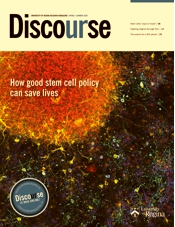Great new reads by U of R scholars
1
In Who’s Coming Out to Play: Disruption and Disorientation in Queer Community Sports (McGill-Queen’s University Press, 2021), associate professor Dr. Claire Carter explores various queer community sports teams and leagues in Canada to look at their potential to disrupt notions about gender and community norms. She also highlights factors that limit this potential. Focusing on spaces that were previously identified as women’s or lesbian leagues that are now becoming trans and genderqueer inclusive, Carter investigates how their commitment to prioritizing community building, fun, socializing, and inclusivity over competition or winning allows their membership to reflect new or different ways of being in their bodies and being with different kinds of bodies, of embodying gender, and of engaging in different rules of play within sporting arenas.


2
Why do we love wizards? Where do these magical figures come from? In Thinking Queerly: Medievalism, Wizardry, and Neurodiversity in Young-Adult Texts (Western Michigan University Medieval Institute Publications and De Gruyter, 2021), English associate professor Dr. Jes Battis traces the wizard from medieval Arthurian literature to contemporary young adult adaptations. By exploring the link between Merlin and Harry Potter, or the Arthurian enchantress Morgan le Fay and Sabrina (the Teenage Witch), Battis shows how the wizard character offers spaces of hope and transformation for young readers. In particular, Thinking Queerly examines how wizards think differently, and how this difference can resonate with both LGBTQI2SA+ and neurodivergent readers who've been told they don't fit in.
3 Dr. Rick Ruddell, justice studies professor and Law Foundation of Saskatchewan Chair in Police Studies, co-authors Contemporary Corrections: A Critical Thinking Approach (Routledge, 2021), an exploration of the essential elements of the United States' corrections system. This book illuminates the role corrections plays in American society, and covers the history of corrections, alternatives to incarceration, probation/parole, race/ethnicity/gender issues in corrections, re-entry into the community, and more. Ruddell’s practical approach, which was informed by his experiences as director of operational research for the Correctional Service of Canada, is reinforced by including contemporary examples, a chapter on correctional personnel, and international comparative data to show how prison officials in other nations have developed different types of responses to problems that challenge correctional administrators.











